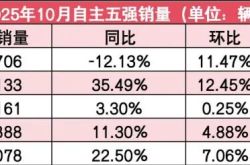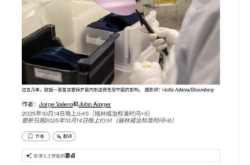Xiaomi Embarks on the Most Arduous Path
![]() 05/21 2025
05/21 2025
![]() 708
708
Source | BohuFN
On the morning of the 19th, Lei Jun, the founder of Xiaomi, posted a detailed message on social media, recapping Xiaomi's decade-long journey in chipmaking. Here are the key takeaways from his message:
First, despite setbacks in the Penta project, Xiaomi has persisted in chipmaking. It has developed numerous small chips, including fast charging chips, battery management chips, imaging chips, and antenna enhancement chips.
Secondly, after deciding to venture into the automotive industry, Xiaomi recommitted to mobile SoC development, investing over 13.5 billion yuan over four years.
Finally, Xiaomi's latest achievement, the Xiaomi Xuanjie O1, employs the second-generation 3nm process, aiming to compete among top-tier flagship experiences.
Recent speculations about Xiaomi's ambitions have now materialized.
Chipmaking represents the ultimate aspiration for Chinese smartphone manufacturers. Leveraging chip and system advantages, Apple has created an unmatched user experience, effortlessly capturing 80% of the industry's profits. Thus, chipmaking is crucial for accessing high-end markets.
However, the difficulty of chipmaking is unparalleled.
Market information indicates that before Xiaomi decided to build cars, OPPO also embarked on a chipmaking initiative, assembling a豪华研发团队of several thousand people. According to insiders, OPPO's R&D achievements nearly reached SoC chip tape-outs. Nonetheless, chipmaking tests not only R&D capabilities but also the parent company's financial support and subsequent iteration capabilities. In summary, it's not a venture that yields immediate profits. Unsurprisingly yet logically, in 2022, OPPO's chip company, Zeku, was abruptly shut down, causing a stir in the industry.
Certainly, Xiaomi has its unique approach.
As previously analyzed, following significant progress in automaking, Xiaomi's automotive business has significantly boosted other divisions, including the growth of its core mobile phone business. At this juncture, Xiaomi should be viewed not as a pure mobile phone manufacturer but as a consumer goods company.
As a consumer goods company, Xiaomi's future development revolves around two prominent themes: "Human-Vehicle-Home Full Ecosystem" and "Hardware and Software Integration, AI Empowerment." The former determines the richness of the product ecosystem, while the latter defines the product experience and the depth of AI integration.
Having learned from the Penta setbacks, Xiaomi understands the intricacies of chipmaking. Yet, this is the most challenging path, and Xiaomi must tread it.
01 Times Have Shifted
A decade ago, Xiaomi embarked on chipmaking, primarily to differentiate and premiumize its mobile phone business.
Self-developing chips offers two benefits. Firstly, it fosters product differentiation as in-house SoCs can optimize software support, enhance hardware-software synergy, and thus provide a more stable user experience. Secondly, in-house SoCs effectively reduce procurement costs, creating a pricing edge.
In 2014, Xiaomi collaborated with Lianxin to establish Pinecone Electronics. In 2017, they launched their first chip, the Penta S1, a mid-range mobile phone chip using TSMC's 28nm process, featuring a 4+4 big and small core all-A53 architecture, a 2.2GHz big core frequency, a 1.4GHz small core frequency, an ARM Mali T860 MP4 GPU, and an upgradable baseband design.
The Xiaomi 5C, equipped with the Penta S1, sold around 400,000 to 500,000 units, considered a satisfactory outcome.
However, Zeku's dilemma two years ago mirrors Xiaomi's challenge a decade ago.
Firstly, there's the financial aspect. Chipmaking is a colossal investment, with a single tape-out costing approximately 100 million yuan. According to 36Kr, insiders have detailed the cost of SoC chips: the 4nm photomask costs 20 million USD, and the expense for IP patents and R&D personnel is 3-5 times that of the photomask, roughly 100 million USD.
A larger expenditure lies in labor, as the demand for chip talent in China outstrips supply (per Huaxin Securities, the number of domestic semiconductor design enterprises grew by over 25% from 2021 to 2023, while employee count only increased by 17% annually), driving up chip talent values. According to media reports, in its early stages, Zeku offered salaries up to 400,000 yuan to fresh graduates to poach talent from Qualcomm and Huawei Hisilicon.
Relying solely on the mobile phone business for financial support, Xiaomi would struggle to sustain large-scale investments.
Secondly, chipmaking necessitates continuous chip iterations. Taking Huawei as an example, in 2009, Hisilicon launched its first mobile phone application processor (AP), the K3V1. It wasn't until 2013 that Huawei released its first Kirin chip, the Kirin 910, finally keeping pace with industry standards.
This tests both R&D capabilities and organizational consistency: whether the mobile phone team is willing to adopt in-house chips. Xiaomi didn't have the time to address this question then, as the Penta S2 underwent four tape-outs in a year, all unsuccessful, temporarily shelving Xiaomi's chipmaking plans.
However, times have changed.
Now, Xiaomi possesses sufficient financial health to balance R&D investments.
According to Xiaomi's fiscal report for 2024, the company set new highs in both revenue and profit, with year-on-year growth of 35% and 41.3%, respectively. Agency data shows Xiaomi's various businesses have continued to perform well this year. In Q1, Xiaomi sold 13 million mobile phones in China, reclaiming the top spot after a decade; the IoT business, particularly the major appliances segment, showed significant growth; after establishing its own factories, cost reduction has also been effective. Despite recent pressure on the automotive business, considering abundant orders, the magnitude of loss reduction will further increase, potentially achieving profitability.
Due to its outstanding business performance, Xiaomi's cash reserves reached 175.1 billion yuan in 2024, coupled with recent financing of 40 billion Hong Kong dollars in Hong Kong stocks. Xiaomi's R&D investment in 2024 was 24 billion yuan, expected to increase to 30 billion by 2025, enabling Xiaomi to sustain long-term chip R&D investments.
Simultaneously, Xiaomi's investment in chips now extends beyond mobile phones, encompassing the entire product ecosystem experience and positioning in the AI era.
As the heart of Xiaomi's ecosystem, the mobile phone experience determines the ecosystem's experience to a certain extent. Steve Jobs noted that individuals genuinely passionate about software should make their own hardware. This is because the ability to integrate hardware and software determines the ceiling of product experience.
With edge AI deployment becoming essential for mobile phones, future demands on mobile phone computing power, battery life, etc., will rise, further testing manufacturers' hardware-software integration capabilities.
Thus, standing at this juncture, Xiaomi has more reason than ever to pursue chipmaking.
02 A Marathon of Challenges
Similar to automaking, after a decade in chipmaking, Xiaomi has made a promising start.
According to Lei Jun's sharing, over the past four years, with an investment of 13.5 billion yuan, Xiaomi has directly funded the creation of a top-tier chip:
The Xiaomi Xuanjie O1 employs the second-generation 3nm process, integrating 19 billion transistors, with a CPU featuring an ARM Cortex architecture of 1+3+4 eight-core (main frequency of 3.2GHz). Per an online comparison chart, while it doesn't match the A18 or the latest Qualcomm Snapdragon, it surpasses the Snapdragon 8 Gen3.
By reviving the SoC chip project, Xiaomi has learned valuable lessons. For instance, in terms of organizational structure, Xiaomi has established an independent company for operations, believed by outsiders to mitigate potential trade risks.
Secondly, regarding basebands, Xiaomi chose not to develop them entirely in-house. According to MediaTek's conference call, Xiaomi's SoC chip may utilize MediaTek's baseband chip as an external component.
Successfully launching the first chip allows Xiaomi to leverage its automotive influence to continue shaping and enhancing its high-end image. It can also harness hardware-software integration advantages to optimize the "Human-Vehicle-Home Ecosystem" experience, such as data transmission.
However, for Xiaomi, this is merely the initial challenge.
Firstly, there's the issue of iteration. Currently reliant on TSMC for procurement, Xiaomi's chip production capacity is limited, meaning Xiaomi cannot widely use its own chips in main models, only gradually introducing them through Pro versions. Chip optimization requires generational iteration, and consumers must be willing to invest in an imperfect experience. Can Xiaomi consistently persuade users to make such choices? Or even convince the mobile phone team to endure potential sales losses to support chip iteration? These test Xiaomi's organizational capabilities and strategic resolve.
Secondly, there's the potential time window issue. Xiaomi's current production capacity is fully outsourced to TSMC. Considering the U.S. government's sensitivity towards the chip industry, while Xiaomi's current approach complies, there's no guarantee the U.S. government won't revise its policies. Thus, even though Xiaomi remains Qualcomm's major customer, there's no assurance it won't face blacklisting. If encountered, Xiaomi must consider domestic solutions.
To truly succeed in chipmaking, Xiaomi faces numerous challenges ahead.
The cover image and illustrations of this article belong to the copyright owner. If the copyright owner believes their work is unsuitable for public browsing or should not be used free of charge, please contact us promptly, and this platform will immediately make corrections.





